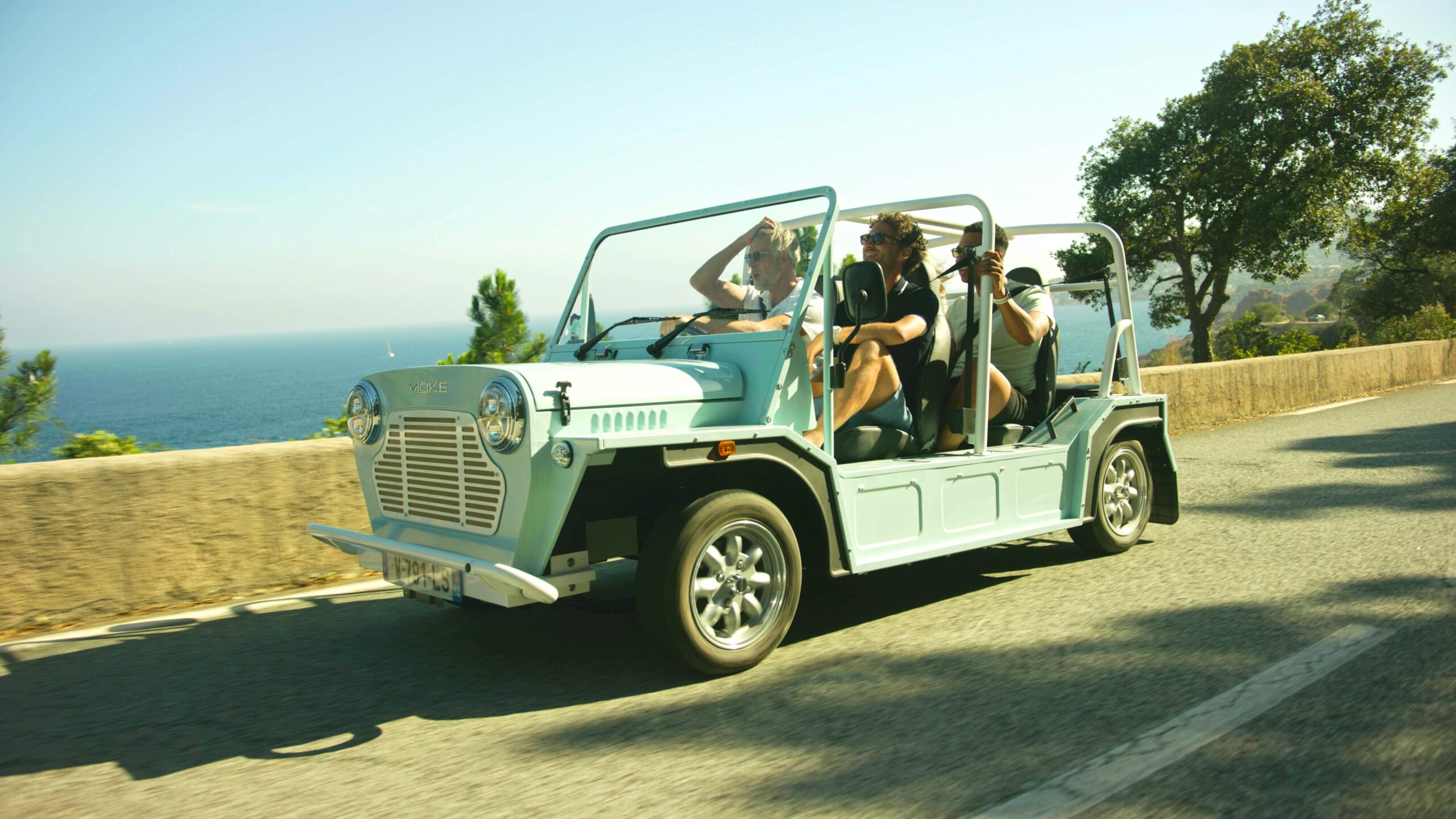ORIGINAL MOKE BRAND BACK IN AMERICA AFTER 40 YEARS WITH NEW ELECTRIC MOKE CALIFORNIAN

MOKE International is returning the Moke Californian to America after 40 years with the more powerful and highway-legal Electric MOKE Californian – a zero-emissions reimagination of the original 1964 Mini Moke. MOKE International owns the original 1964 British Motor Corporation Moke trademarks and is recognized in over 100 jurisdictions as the owner of the Moke brand.
The Electric MOKE Californian is hand-crafted in the United Kingdom to the same high specifications and standards as the Electric MOKE that recently went on sale in Europe, but its name is a U.S. market-specific tribute to the 1977 Moke Californian – an uprated version of the Mini Moke that was sold in America and ceased production in 1982.
This is the first time a genuine version of the original Mini Moke has gone on sale in the U.S. in more than four decades, and the first time a highway-legal version of the original Mini Moke has been available in America, with a top speed of 50mph (80kph). Fully charged, the Electric MOKE Californian offers a range of 80 miles (120km) – enough to cruise Route 101 down to Malibu Beach from Santa Barbara. A full charge takes four hours on a US Type 1 charger.
MOKE International is the first 1960s brand to go fully electric, reinventing the Mini Moke through zero-emissions technology to continue its legacy as a design icon and beloved beach accessory.
Isobel Dando, CEO MOKE International, said: “This is a momentous time for MOKE International. It’s great to be able to offer the US market a genuine MOKE car for the first time in 40 years. The original Moke Californian represented an incredibly important chapter in the company’s rich history; we are proud that the MOKE lives on and can be enjoyed in the electric era.”
The Electric MOKE Californian’s pure bloodline
MOKE International, maker of the new Electric MOKE Californian, continues the legacy of the legendary Mini Moke, but reinvented for the electric era. The Mini Moke was born in the heartland of Britain’s automotive industry, created by the father of the Mini, Sir Alec Issigonis.
With prototypes built by the British Motor Corporation in 1959, developed under the codename ‘The Buckboard’, the Mini Moke was originally intended to be a lightweight military vehicle that could be parachuted into warzones and help troops traverse rough ground quickly. Marketed domestically as a utility wagon for farmers and workers, it quickly found legions of fans across the globe, especially in the South of France and Australia, where its rugged nature and open top design made it the ultimate beach shuttle. Loaded with surfboards and refreshments, with the wind running through your hair, life was for living.
Countless admirers including The Beatles, The Beach Boys and Brigitte Bardot – all seen driving the Mini Moke in glamourous seaside locations like the French Riviera and the Caribbean – cemented its status as an icon of the Swinging ’60s.
While there were many variants of the original Mini Moke made before production ceased in 1993, perhaps the most exciting and desirable was the Moke Californian, which was sold in the U.S. from 1977-1982. Styling-wise, it was a departure from the Mini Moke’s utilitarian look which made it popular with a young, fashion-conscious crowd in sun-drenched locations like Playa del Rey and Cayucos.
Still built in the UK, at a state-of-the-art facility operated by Fablink Group in Northamptonshire, the new Electric MOKE Californian embodies all of the same qualities of the original – fun, freedom, fresh air – but plays its role in keeping some of the world’s most beautiful locations clean through zero-emissions technology.
Using a 44hp electric motor and weighing less than 800kg, the rear-wheel-drive Electric MOKE Californian covers 0-34mph (0-55kph) in 4.3 seconds and achieves a top speed of 50mph (80kph). A full charge takes just four hours via a Type 1 port and the Californian covers up to 80 miles of range on a single charge. Further details on when the Californian will go on sale in the U.S., as well as pricing, will follow in the coming weeks.






